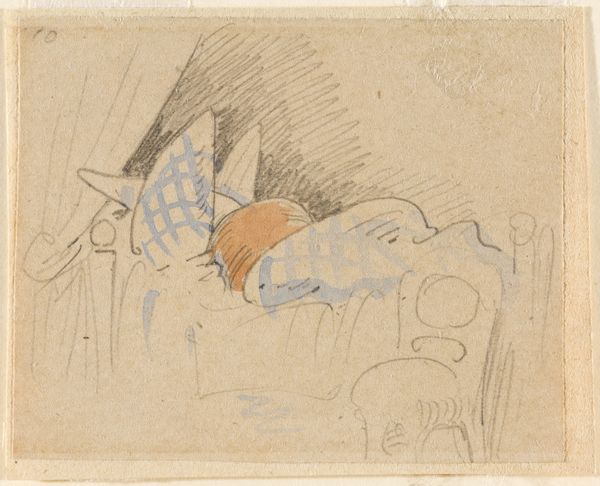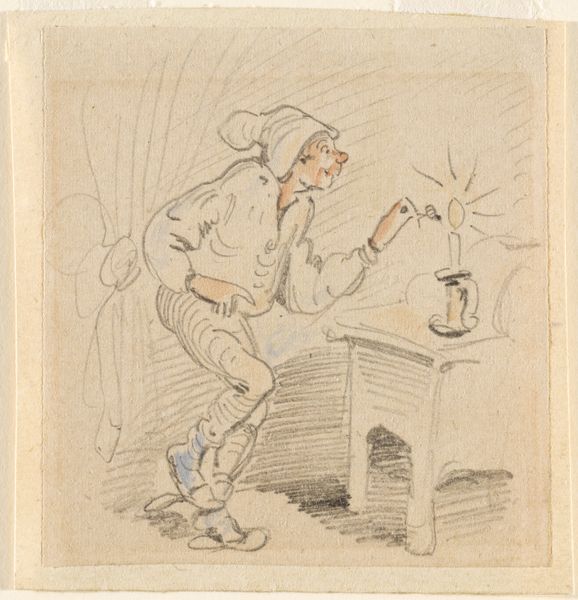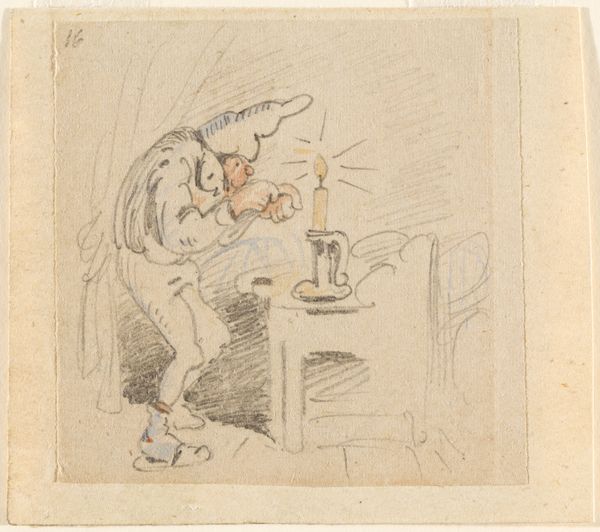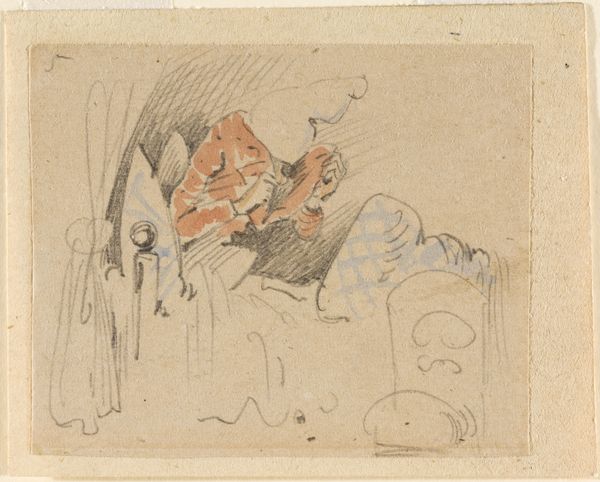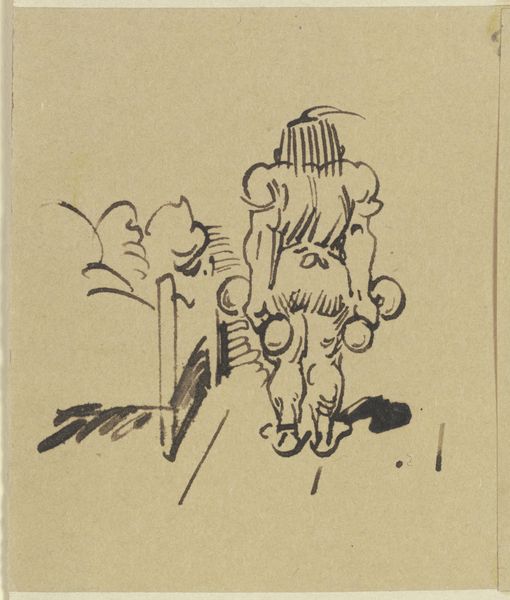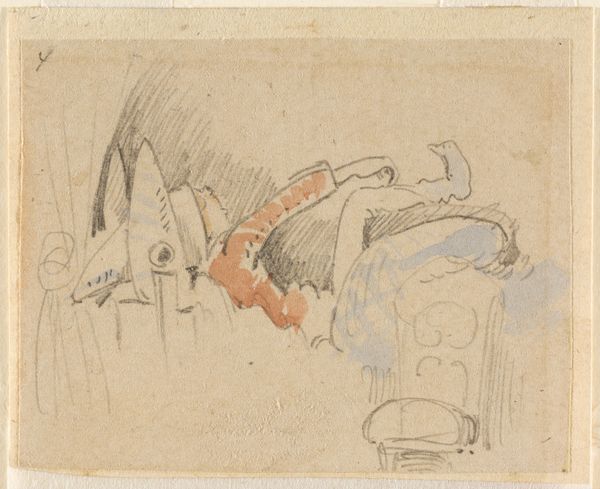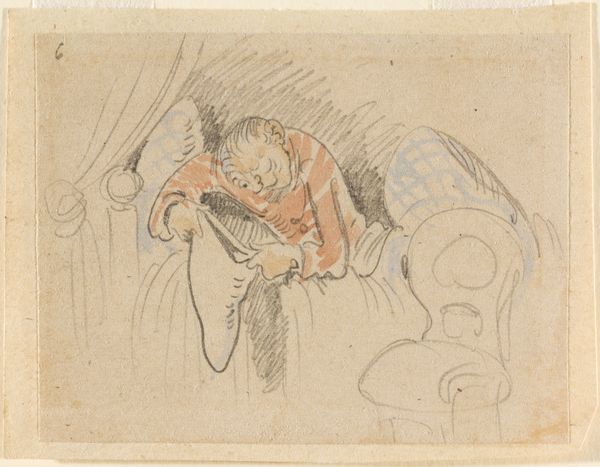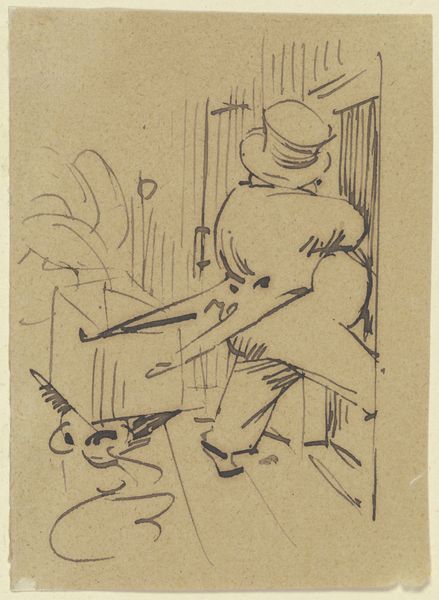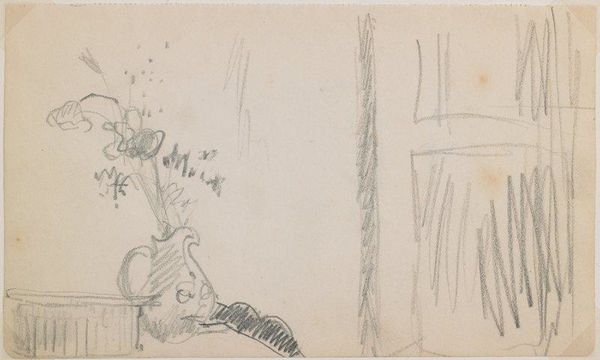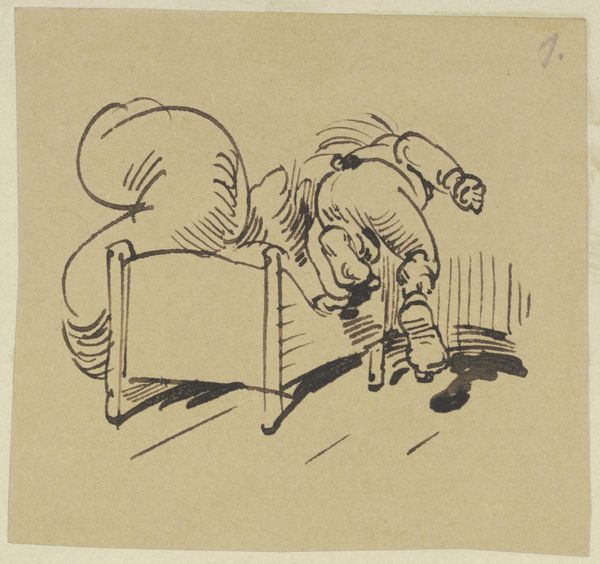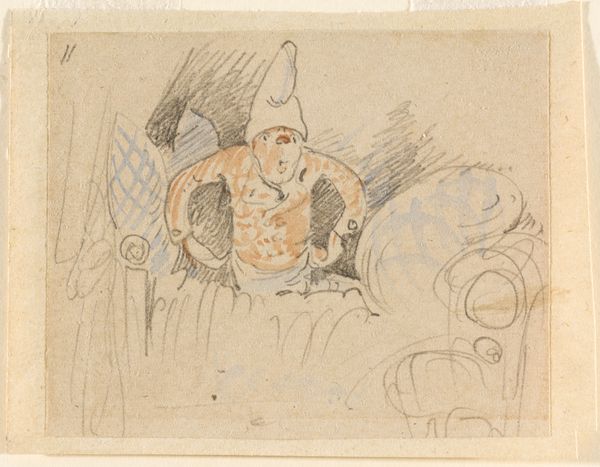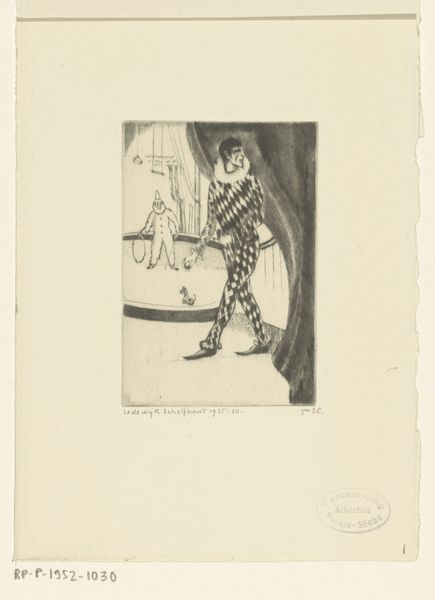
Die gestörte, aber glücklich wieder errungene Nachtruhe (Der Floh); 18 1862
0:00
0:00
drawing, pencil, charcoal
#
portrait
#
drawing
#
figuration
#
pencil
#
charcoal
Copyright: Public Domain
Curator: Here we have a piece by Wilhelm Busch, from 1862. The title, translated, is "The disturbed, but happily regained night's rest (The Flea)." It’s rendered in pencil and charcoal, currently residing at the Städel Museum. Editor: Immediately I notice the economy of line; it feels quite immediate, almost like a quickly jotted down note. You can see the artist’s hand so clearly in the visible pencil strokes that it feels intimate. And I find the composition oddly off-kilter. Curator: Indeed. Busch was, of course, a master of visual storytelling, especially through caricature. Consider the central figure, viewed from behind, caught mid-scratch – a universal pose born from shared, if unwanted, experience. It embodies that fleeting irritation disrupting our peaceful slumber. Editor: Yes, but even the materials used point to something deeper about artmaking in this period. Charcoal and pencil are easily accessible; perfect for quickly capturing an idea but also mass production and illustration. They speak of the expanding visual culture of 19th century Germany. Curator: Absolutely. The work points toward universal anxieties made visible. The very idea of a ‘fleeting’ and 'unwanted experience', gives rise to associations from simple everyday anxieties about comfort and luxury to grand existentialist themes such as chaos or disease that permeates the supposed serenity of life. The decorative elements almost mocking in juxtaposition to the figures distress. Editor: And how might his work challenge notions about 'high' art? This seems so intentionally raw in execution that I’d call it deliberately unpolished. Curator: Precisely. He wasn't necessarily aiming for pristine refinement but rather direct emotional engagement, making something universally resonant accessible with what was readily at hand. A great commentary. Editor: In Busch's hand, the base materials transcend mere function and become a conscious choice; highlighting art's potential for humor, social commentary, and reflection upon life’s unavoidable moments of discomfort and momentary anxiety. Curator: Well put. It certainly reveals the emotional continuity that can arise between the personal anxieties and collective consciousness. Editor: And reminds us that art doesn't always have to be grandiose to be insightful. It can spring from simple means and tackle universal frustrations.
Comments
No comments
Be the first to comment and join the conversation on the ultimate creative platform.
